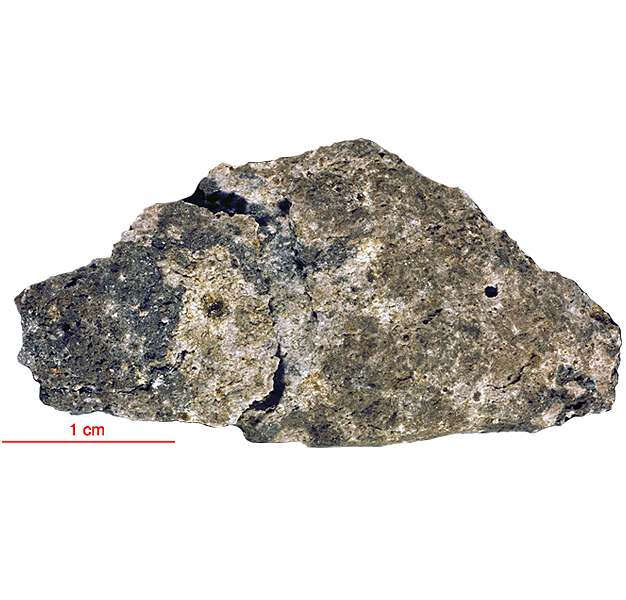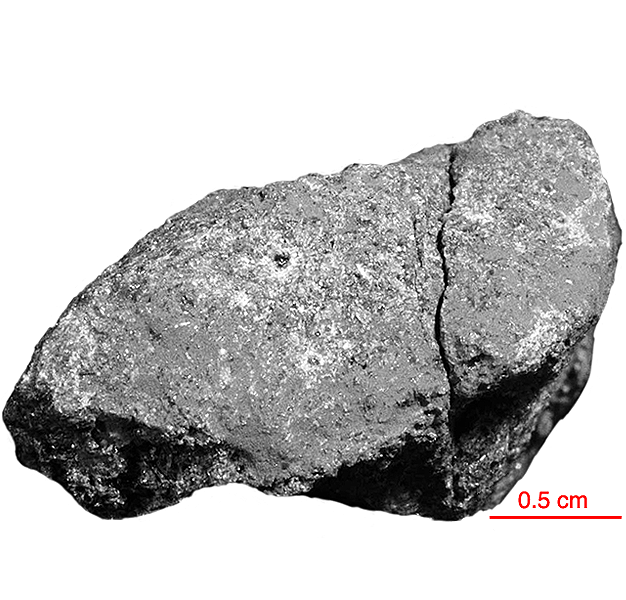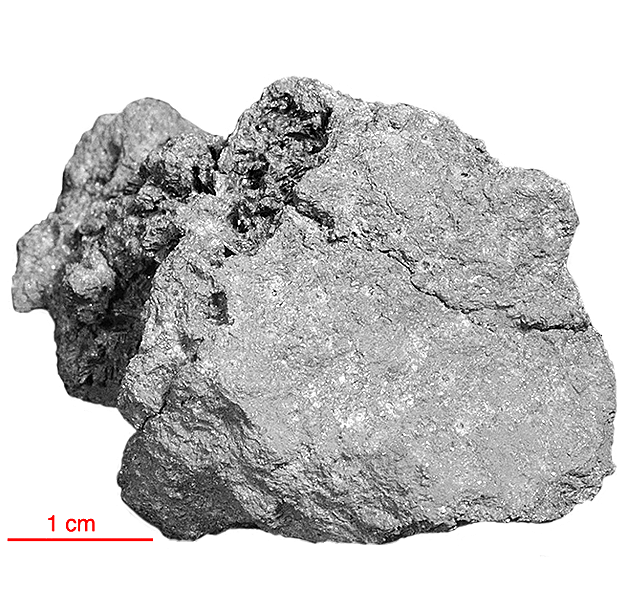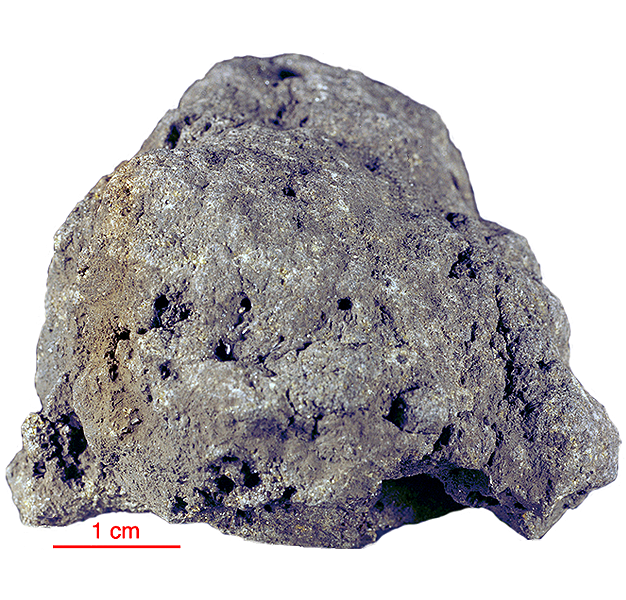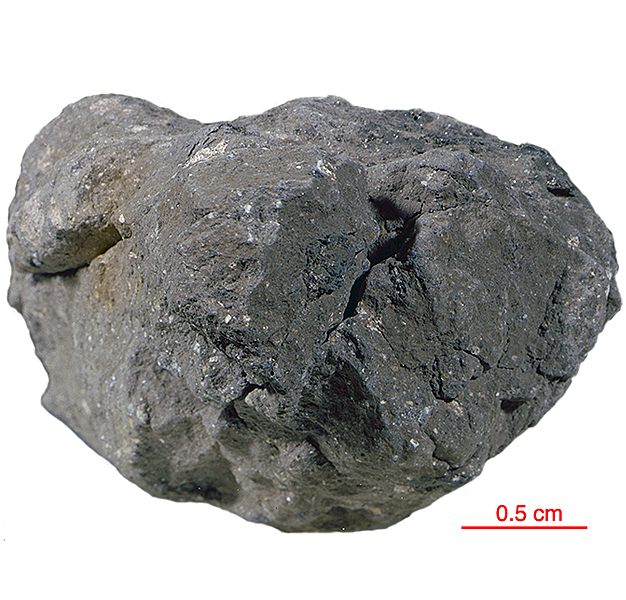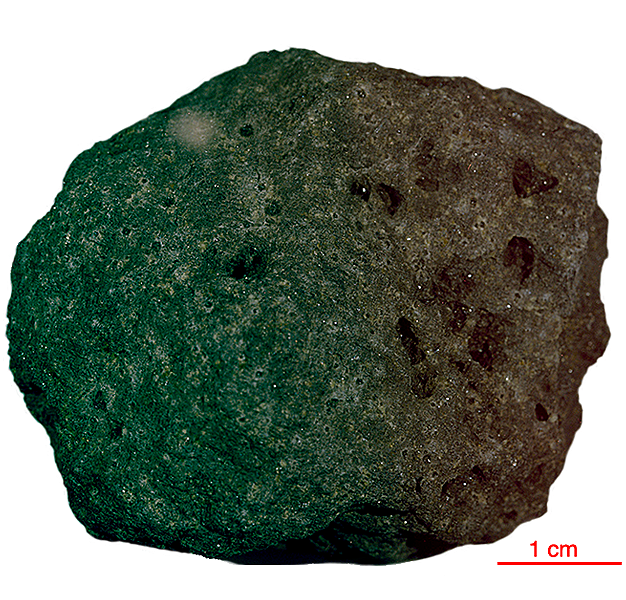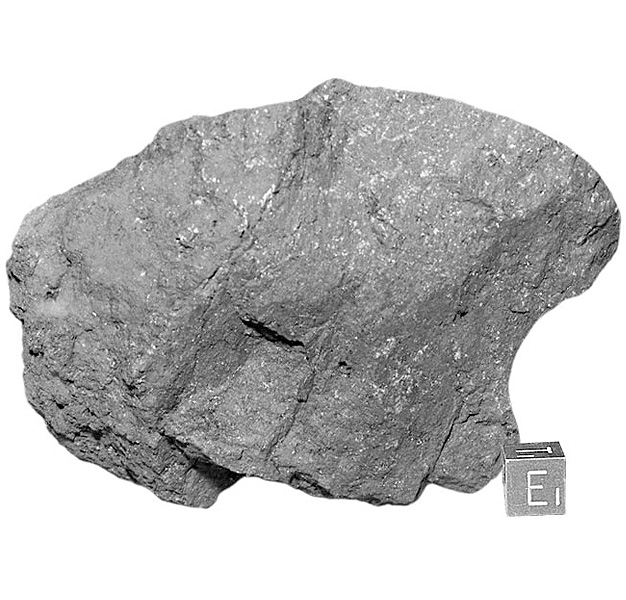
Fact sheet
Sample 12009 is an olivine vitrophyre collected during the Apollo 12 mission to the Moon. The rock is rapidly-cooled basalt that formed skeletal crystals in a glass matrix. The sample has been dated at 3.2 billion years, but it was brought to the surface by a meteorite impact much more recently since it has a cosmic ray exposure age of 136 million years.
In thin section, the sample consists of skeletal phenocrysts of olivine (0.3-1.0 millimetres) and pyroxene (0.2-0.8 millimetres) set in a matrix of microcrystalline devitrified glass and small crystals of olivine, pyroxene and ilmenite that crystallised from the melt.
Further details of this and other Apollo samples are here: http://curator.jsc.nasa.gov/lunar/
Apollo 12 returned 34 kilograms of samples, including 45 rocks, samples of lunar 'soil', and several core tubes that included material from as much as 40 centimetres below the lunar surface.
Apollo 12 rocks were almost all basalts, with only two breccias in the returned samples. The basalts at the Apollo 12 site formed 3.1 to 3.3 billion years ago, roughly 500 million years later than the Apollo 11 basalts. Overall, there is much less of the element titanium in the Apollo 12 samples than in the Apollo 11 samples, which explains the more reddish colour of this region. The differences in age and chemical composition between the Apollo 11 and Apollo 12 samples demonstrate that mare volcanism did not occur as a single, Moon-wide melting event.
Apollo 12 was launched on 14 November 1969.

